Long before the European invasion of North America, a number of autonomous, independent, and linguistically related peoples lived in contiguous territories in what would become the state of Washington. These peoples included the Yakama, Kittitas, Klikitat (also spelled Klickitat), Tainapam, and Wanapam. In 1855, the United States government forced a treaty on these people, grouping them together on what would become the Yakama Reservation and later forming the Consolidated Tribes and Bands of the Yakama Nation.
The various peoples who lived in this area along the Columbia River, commonly called the Mid-Columbia area, are famous for making baskets. In his book People of the River: Native Arts of the Oregon Territory, Bill Mercer, the curator of Native American Art at the Portland Art Museum, writes:
“Basketry is an art form that reached great heights of creative expression among the people of the Columbia River region. Although baskets served primarily functional purposes, they were nevertheless constructed with great care and decorated with sophisticated designs that lent them an aesthetic status beyond mere utilitarian objects.”
With regard to the tradition of making baskets, Bill Mercer reports:
“Numerous and time-consuming steps went into the making of a basket, and the art of basketry was passed down from one generation to the next, with young women learning from a more experienced female relative, such as a mother, grandmother or aunt.”
The materials for making baskets—cedar and spruce roots; elk and rye grass; strips of willow, cedar, and alder bark; and Indian hemp—were usually gathered in the fall. Baskets were then woven during the winter. In her book Columbia River Basketry: Gift of the Ancestors, Gift of the Earth, Mary Dodds Schlick reports:
“Most basketmaking, that essential industry, was carried out in wintertime when food-gathering was over for the year and families could settle into their winter homes.”
Most of the basketmakers were women, but many young boys also learned this skill.
One of the important foods in this region is the huckleberry and weavers, such as those among the Klikitat, would make special baskets for carrying and storing huckleberries. In her chapter in Woven History: Native American Basketry, Mary Dodds Schlick reports:
“Sloping sides of the traditional basket distribute the weight of the berries and the mold-resistant roots of the Western red cedar, used to construct the basket, keep the berries fresh.”
This type of basket has become known as the Klickitat basket although it is made by other tribes in the region as well. Helen Schuster, in her chapter in the Handbook of North American Indians, explains:
“There were large, hard, coiled imbricated ‘Klikitat’ baskets that could hold from two to five gallons of fruits and berries, made out of cedar roots, with rye grass from the mountains dyed various colors for imbricated designs.”
In her book Columbia River Basketry: Gift of the Ancestors, Gift of the Earth, Mary Dodds Schlick writes:
“We associate these baskets with the autumn, for the best-known style was the huckleberry basket—round and tall with sides sloping outward toward a looped edge finish at the rim.”
A false embroidery technique (imbrication) was often used to create patterns on the baskets. Strips of beargrass would be sewn onto the surface of the basket as the coils were sewn together. Bill Mercer writes:
“The result is that the strips of beargrass resemble small loops and are visible only on the exterior of the basket.”
In her book Columbia River Basketry: Gift of the Ancestors, Gift of the Earth, Mary Dodds Schlick writes:
“Unknown except in the Pacific Northwest, imbrication allows the weaver to create a complex design with the added interest of a textured tilelike surface.”
Concerning the use of the Klickitat baskets, Bill Mercer writes:
“Once a basket was filled, it would be left in the shade of a tree and leafy branches would be interlaced through the loops to prevent the berries from drying out while the harvesting continued.”
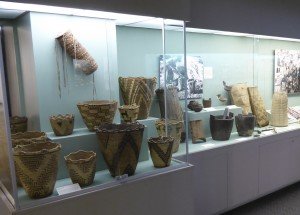
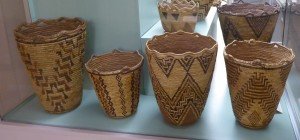
The Maryhill Museum located near Goldendale, Washington, has a display of Klickitat-style baskets. The tall flaring baskets are often attributed to the Klickitat, but they are also made by the Yakama and other Plateau tribes.
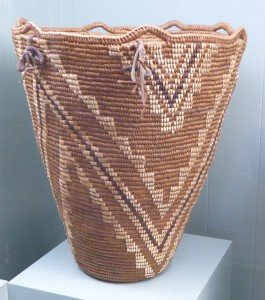
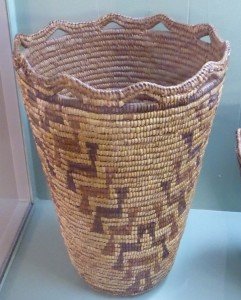
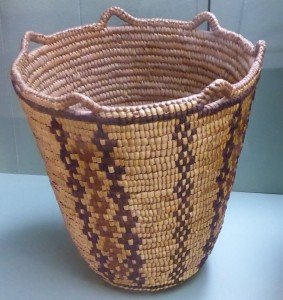
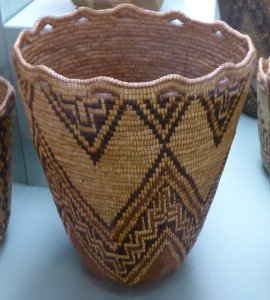
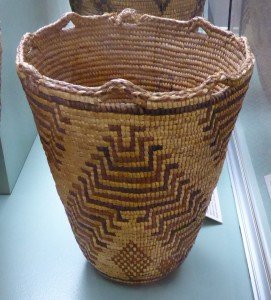
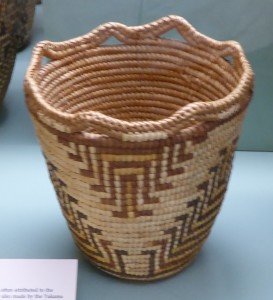
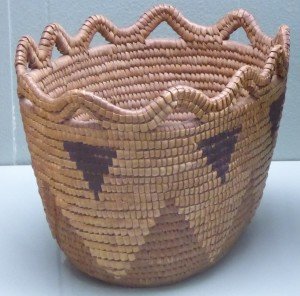
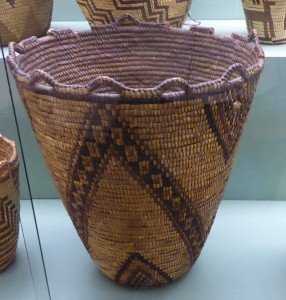
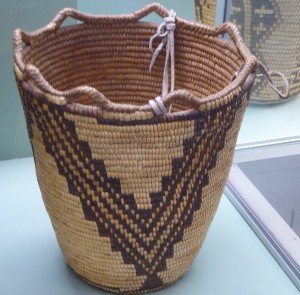
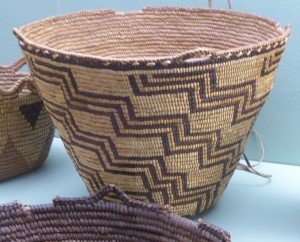
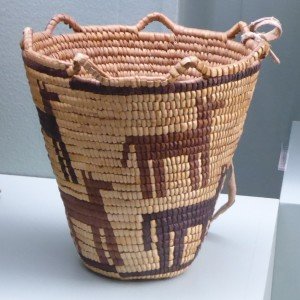
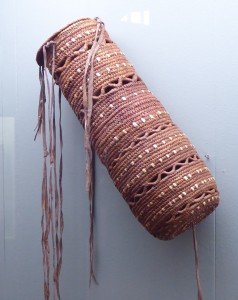
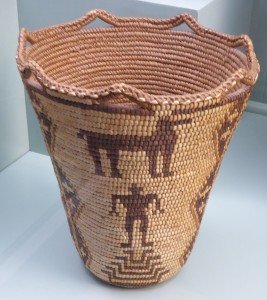
Making Klickitat baskets is time-consuming work. To produce a basket completely covered with imbrication in a complex design takes about three months of steady weaving each day. For this reason, few young people can afford to become professional basketmakers.
With regard to the economics of basketmaking, Mary Dodds Schlick, in her book Columbia River Basketry: Gift of the Ancestors, Gift of the Earth, writes:
“The period of affluence that created the demand for Klikitat baskets ended with the Great Depression and the basketmakers lost a market for their fine work, not to recover until fifty years later.”
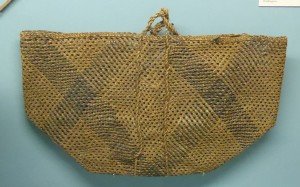
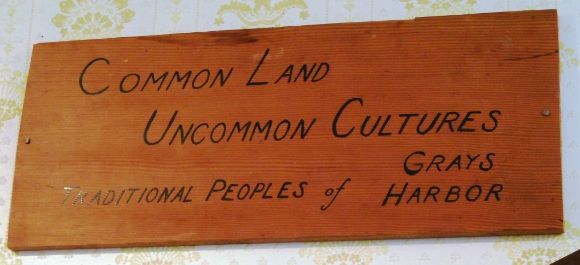
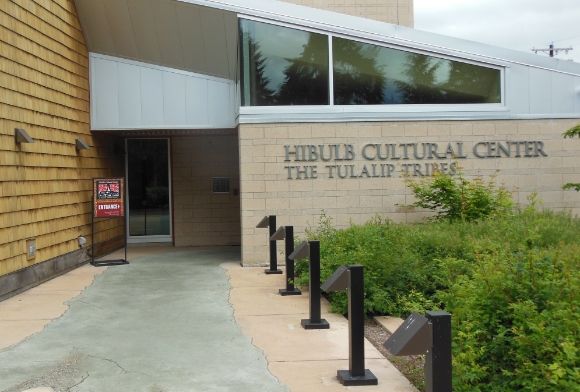
Leave a Reply